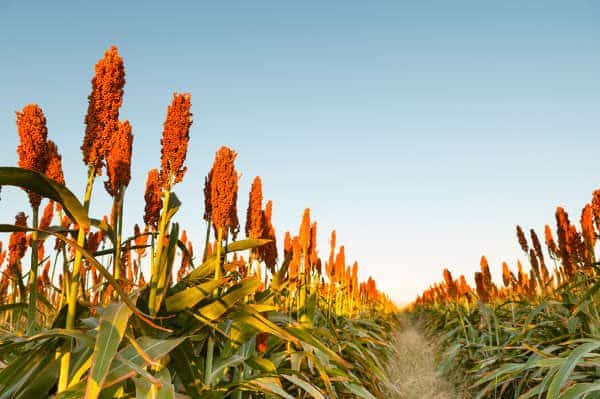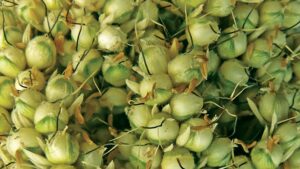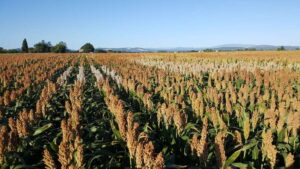It’s what sorghum farmers need, and researchers are delivering.
In a few short years, sorghum farmers might be inundated with new hybrids from which to choose thanks to the discovery of two sorghum haploid inducer lines.
Through a collaborative research project with the United Sorghum Checkoff Program, researchers at DuPont Pioneer searched tirelessly for three years, looking for a needle in a haystack… and they found two.
Cleve Franks and Tanveer Hussain essentially screened all the germplasm they had access to — well over 4,000 hybrids — from all over the world.
“We took a brute force approach and got lucky,” says Franks, a DuPont Pioneer plant breeder.
However, he says as a researcher you can’t get too excited early in the process.
“We found a lot of things that could have been inducers, but we weren’t sure yet,” Franks explains. “It never was really real until we grew it the second time and could confirm that those were in fact haploid plants, and it kept happening and kept happening. So we knew we had the real thing at that point.”
What’s the real thing? Two sorghum haploid inducers, which could ultimately lead to the production of double haploids in sorghum.
“From a breeding perspective, this could be a game-changing discovery — quite revolutionary in terms of the way we go about product development in sorghum,” Franks says. “This could give sorghum breeders the opportunity to create finished products (finished parental lines) to go into producing hybrids in one single step.”
For the most part, sorghum breeders have been limited to traditional plant breeding methods. Franks says it currently takes five years to completely finish an inbred line where he feels comfortable using it in a hybrid combination. With double haploid breeding, he says, he can do that in one year.
“It’s a significant change in the way we do research,” he adds.
The project got its start during a board meeting of the United Sorghum Checkoff Program.
“Our board of directors realized that to effectively meet the needs of growers, it would require something revolutionary within sorghum genetics and sorghum breeding programs,” says Justin Weinheimer, crop improvement director for the United Sorghum Checkoff Program. “Farmers have benefitted from this technology in other commodities, particularly corn. We are excited to unlock the same potential for sorghum.”
As an example, Pioneer reports that in 2012, the company generated more corn inbred lines through doubled haploid technology than it had produced in the first 80 years of its breeding program.
“Think about a sorghum breeding program and only being able to focus on two or three characteristics at a time; now we can work on many,” Franks says. “It’s like exponentially expanding your bandwidth.
“It will allow us to make genetic gains in a much more efficient way, significantly reducing the amount of backcrossing required. We’re talking about going from eight or nine generations to two.”
Franks says it allows breeders to leverage other technologies, such as molecular markers and genomic predictions — “things like that we couldn’t do as well with traditional breeding methods.”
All in all, this means sorghum will be able to better compete with other crops.
Next Steps
While the discovery of these two inducer lines is exciting, the researchers explain that it’s the first hurdle cleared in accelerating yield gains for sorghum.
Next steps include fine-tuning it to increase the haploid induction rate and getting it into a production system.
“We’ve got the haploids; now we need to put it into production — make the double haploids and all the rest of the production process,” Franks says. “We are hoping that within three to four years we can have a pilot small-scale system up and running. It could happen before that but that’s our timeframe.
“We are hoping to work on Phases 2 and 3, but first we have to get the technology to the next level of commercial viability,” Franks says. “That means sharing the technology through licensing.”
Licensing the technology was a condition of the collaboration in which the checkoff invested $800,000.
“It was a high-risk investment, because there was no guarantee that we would find anything,” Weinheimer says. “We are certainly excited to see the potential of this technology and what it would mean for crop improvement in sorghum.
“For farmers, this means the entities they are purchasing seed from can now do a better, more efficient job of meeting their needs.”
Weinheimer says the overarching goal of the sorghum checkoff project is to increase sorghum producer profitability through research, information and education.
Continued Collaboration
The search for inducer lines is just one component of DuPont Pioneer and the sorghum checkoff’s collaborative efforts.
“One characteristic we are looking at includes stalk lodging,” Franks adds. “We are in the process of developing a high throughput screen for stalk lodging, which will allow us to screen our germplasm for this trait on a large scale.”
Additionally, he says his team uses genetic screening options to examine what makes or doesn’t make for good tillering.
“We are looking at tillering to see if there are ways we can develop low- or no-tillering sorghums,” Franks says, noting that some producers are very interested in that.
Given all this work and the discovery of the two inducer lines, the sorghum community expects breeders to really explore the untapped potential of what is possible. It could be improved herbicide tolerance, drought tolerance and insect resistance. Or it could be something entirely different. Regardless, these efforts will help meet growers’ needs and help sorghum to remain a competitive crop.













